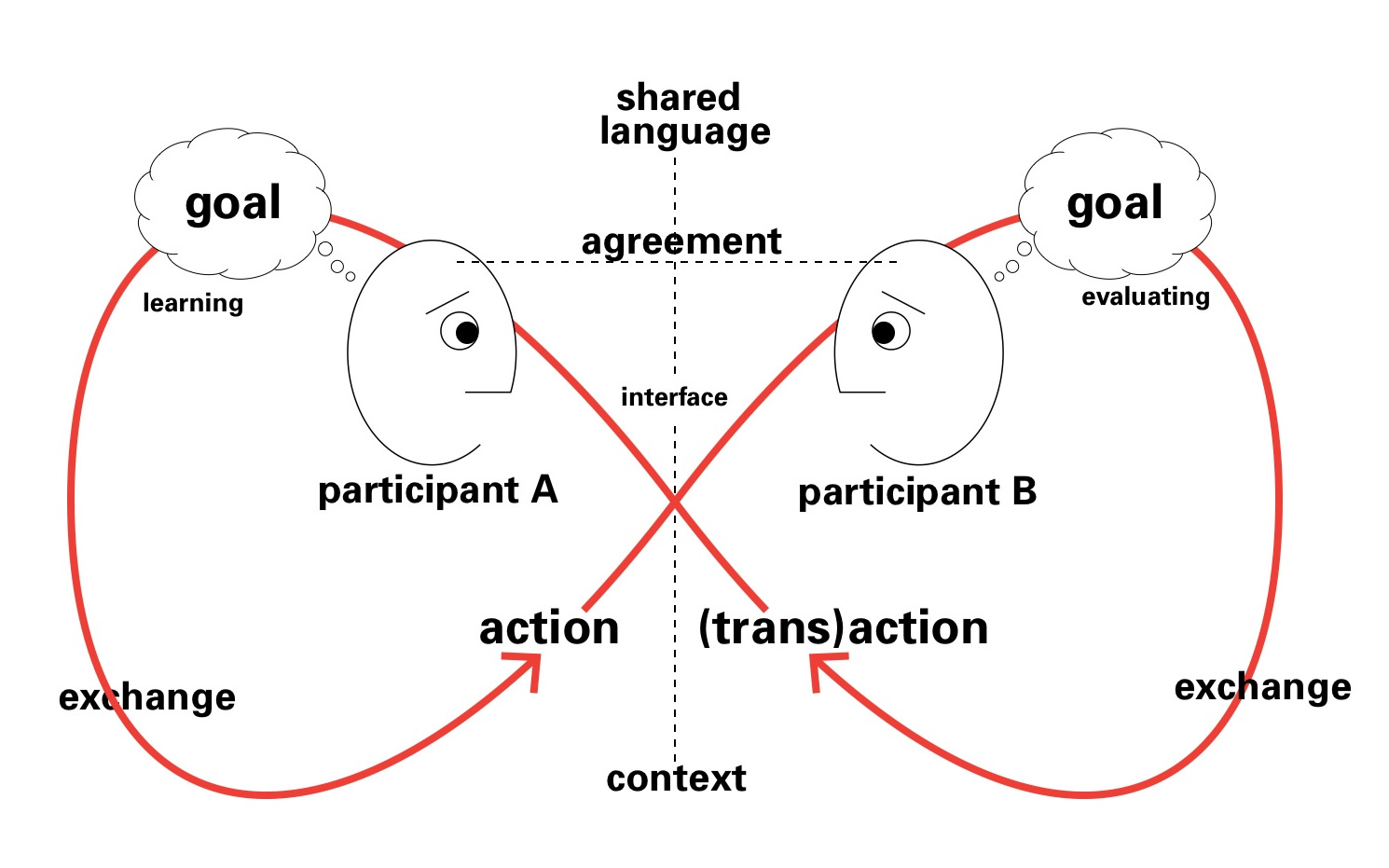Panel Discussion with Cheryl Heller at DOM5 Conference |
|||
 |
|||
position statement
Desirable futures harmonize the hopes of individuals with the coordinated actions of organizations and their teams. Such actions rely on agreement, which requires conversation. Therefore, our shared future is tied to our competence in conversation—and we need a deep and prescriptive proficiency, not a shallow, clichéd one such as that afforded by today's collaboration tools and social media.
In situations of rapidly increasing complexity, existing solutions are inadequate. Finding a way through wicked problems means nothing less than the invention of effective worldviews; in other words, we must create new language to counter the new complexity confounding us.
But when complexity increases, so does uncertainty, and so our stress rises, too. A response to the fears of individuals—and its twin, resistance to change—must be integrated into any deliberate design of our future. Again, conscious and skilled conversation is the means.
Hypothesis: Building viable and productive organizations requires prescriptive models of conversation and the creation of new language, in order to reach an assured co-evolutionary strategy and to secure a desirable future.
related media
Notes on the Role of Leadership and Language in Regenerating Organizations
Design for Conversations & Conversations for Design
acknowledgmenets
Thanks to Michael Shamiyeh, Director, Design-Organization-Media Research Lab (DOM).
biography
Paul Pangaro is a technology executive, conversation theorist, entrepreneur and teacher. He is CTO and co-founder of CyberneticLifestyles where recent clients include Nokia, Samsung, Alcatel-Lucent, Intellectual Ventures, Citigroup, Ogilvy & Mather, and Gideon Gartner. Projects span software roadmaps, mobile services, new models for user interaction, and design for innovation. His experience with organizations has led to a rigorous understanding of the barriers to change and a set of prescriptions for enterprise innovation and creative teamwork that he has presented in São Paulo, Paris, Vienna, Berlin, Amsterdam and throughout the United States. At Stanford University, Paul co-taught a course in the cybernetics of design for 7 years and teaches now in the School for the Visual Arts MFA Interaction Design program in New York City. He was awarded a BSci from MIT in Computer Science and Humanities, and a PhD in Cybernetics from Brunel University. His work can be found at http://pangaro.com/.
Conversation figure after Dubberly Design Office.
Other content copyright Paul Pangaro 2009 - 2011.
All Rights Reserved.